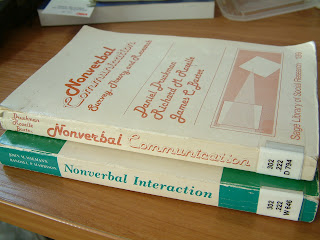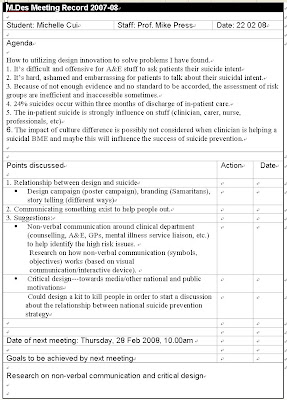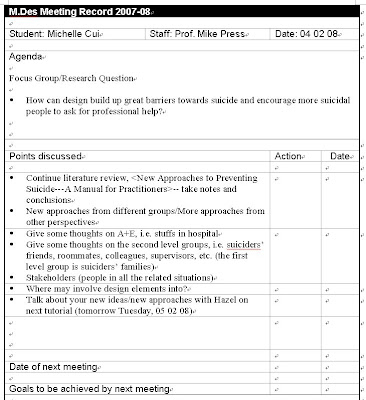TABLE OF CONTENTS
1. MUSIC AND VIDEO DIRECTOR, ANTON CORBIJN
2. THE FILM ‘CONTROL’
3. DO WE REALLY KNOW EACH OTHER?
3.1 Debbie Curtis
3.2 Relationship with Innik
4. Epilepsy
5. Accumulating Pressures - Suicide
6. BIBLIOGRAPHY
1. MUSIC AND VIDEO DIRECTOR, ANTON CORBIJN
Anton Corbijn is a photographer, movie and video director fromStrijen in theNetherlands. He commenced his career by taking photographs during a live concert in 1972 and then moved from Europe to the United Kingdom in 1979 where he commenced his professional career as a music photographer. He is known for directing, mainly music videos of bands such as U2 and Depeche Mode. He became widely known, however, for his work with the post punk band, ‘Joy Division’ (hereafter, the ‘Band’). The Band is the subject and topic of this film, ‘Control’.
Significantly, Corbijn exhibited photographic work featuring members of the Band on two separate occasions. Personal exposure to the Band members during these photographic shoots gave Corbijn a first hand and rare insight into the Band members and subsequent characters to the film. In all respects, Corbijn is eminently qualified to direct a film about the Band.
The film was presented as a premier at the 2007 Cannes Film Festival and received rave reviews by audiences with an interest in the Band as well as fans seeking a presentation of his professional style which exhibits raw emotion and stark black and white imagery.
[1]2. THE FILM ‘CONTROL’
Utilising the biography work of Deborah Woodruff
[2] entitled ‘Touching from a Distance’
[3], Corbijn attempts to tell a story about a ‘tragic love relationship’.
[4] Specifically, the life of the lead singer of the Band, Ian Curtis ‘who was confounded in a relationship outside of his marriage’.
[5] He also struggled with epilepsy which was portrayed as ‘the part of his life that he could not control’.
[6]The director indicates that he had been thinking about making the film for a long time because of his interest in the medium, specifically the use of film and black and white imagery but that the film was not intended to be produced for commercial reasons.
[7]He identifies the Band as being one aspect, only, of the life of the artist, intending that the film not be labelled as a rock and roll film but more a portrayal of life, new love, and the tragedy of confinement and personal isolation. The issues of depression, use of alcohol and youth suicide also feature in the original work.
3. DO WE REALLY KNOW EACH OTHER?
When considering this film, from a critical analysis perspective, it is difficult not to incorporate some greater analysis of the true life story which sits behind it.
Given that the film is based on the biography work, it is clear that the director intended that the film portray, to some extent, true life events. One example of this intention is the directors insistence on the actors who play the other members of the band learning how to play the musical instruments that the young members of the real life Band would have struggled with themselves.
It is possible that this attempt to stay true to the story as confined by the base biography may have boxed the film, to some extent, so that the audience is left with a disjointed and potentially unsupported journey. A portrayal of his life as seen through the eyes of one person only. Clearly, it may be suggested that this single perspective is unlikely to have fully captured what was happening in this man’s mind.
Of particular interest, and significance in my view, are the relationships, as portrayed, between the main character and his wife and also his relationship with his lover, Innik. It is possible that the audience may struggle to grasp the dynamics of each of these separate liaisons which seem, on their face, to be of the sole making of the main character.
3.1 Debbie Curtis
The director portrays the main actor, the young Ian Curtis as a shy and almost introverted teenager. He develops a close and affectionate relationship with a young woman. At 16 they marry at his request. They later have a baby, again at his request.
Ian, now older, is working as a job employment consultant and their young married life is portrayed as simple. He does, however, seem to be totally in control of their relationship. This is evidenced, or at least portrayed, by the director as the two defining moments in Ian’s young married life. On the first occasion the director shows Ian asking Debbie to marry him but not in a structured or supported sense. Debbie responds by saying ‘alright’
[8], seemingly surprised and after only a moment of thought. On the second occasion, some years later, Ian says ‘I think we should have a baby’
[9] and Debbie provides a similarly thoughtful response of ‘ok’
[10].
It seems evident that Ian is totally in control of the relationship and that there is no indication or further presentation in the film to provide the audience with reasons why Ian might, or should be unhappy or depressed. Some greater focus of building Debbie’s character and providing the audience with something to grasp at the early stages of the film may have assisted to ‘lead’ the viewer into the later scenes, which include his relationship with Innik and struggles with his medical condition and mounting musical responsibilities.
This loose use of character building in the early stages of the film may potentially contribute to the audience experiencing difficulty in grasping the full context and dynamics of marring young and living in a small community in that era.
3.2 Relationship with Innik
Ian develops a relationship with a part time journalist who he met while the Band was travelling on tour.
He describes her in one scene as a ‘free and independent woman’
[11]. It is left to the audience, however, to contrast her character with that of Ian’s wife. It seems possible that the relationship started, in addition too, not as a replacement of, his relationship with his wife. This however, is unlikely, and may be due solely to the confined approach taken by the director in developing the characters and story.
The director moves the relationships every quickly and with very little dialog. One analogy that is evident in both relationships, is that both female characters seem to be smiling the whole way through the majority of their scenes. It may be difficult for the audience to understand or contrast the two women in this sense as they both look equally happy most of the time.
What is not difficult for the audience to grasp, however, is the substance of the dialog between the two characters, which is substantially different. It seems evident that Ian interacts with Innik on a more equal footing and it is clear that his interest in this woman transcends any physical connection or attraction, towards perhaps, something resembling a physiological dependence.
Ian is confronted by Debbie and volunteers that he will break it off with Innik. It is not evident, however, from the directors portrayal whether this move is motivated by Ian’s desire not to hurt Debbie as opposed to any suggestion that he did not want to be with Innik.
4. EPILEPSY
Ian is diagnosed with the medical condition epilepsy. He is prescribed a concoction of medications, which are shown to have substantial side effects, including potential for depression and / or mood swings. When taken with alcohol, the potential side effects are compounded.
Two aspects of this issue stand out in the film. Firstly, there is some focus on educating the audience on the ‘hit and miss’ approach to managing the medical condition at the time. A scene was devoted to the initial prescription and potential scope of the medications required with emphasis on the fact that there may be no way of managing the condition with any degree of confidence.
A further scene portrayed Ian being alarmed at the possible greater risks he was facing with the condition. Here the director shows Ian in his employment hearing on the telephone that one of his clients had suffered a fit and as a result, had died.
5. ACCUMULATING PRESSURES - SUICIDE
The film portrays each of these factors as accumulating to a point where Ian initially attempts unsuccessfully to commit suicide and then later does so. The director chooses to present this accumulation by voice-over narrative, by the main character, while events progress visually.
This seems to work very well in the sense that the audience is allowed at this point in the film to hear exactly what is going on in the mind of the main character without confusion caused by inconsistent director presentation or audience interpretation, as was evident in the development of the two main female characters.
This journey by narrative, although short in screen time, is presented clearly and in a fashion that is almost obvious. The audience is left with very little to consider and may even feel that they are spiralling with the characters themselves. The last part of the film really drags the audience along in a cloud of hopelessness with scenes involving each of the main characters and Band members.
If anything this sense of hopelessness goes some way to trigger in the audience a sense of reality of not only the triggers but also the accumulating factors that contributed, in this case, to depression and then self harm.
It is likely that this film will encourage viewers to search for a release mechanism or a safety net that could be tripped or laid out to catch a friend or someone in need who finds themselves spiralling downwards towards a similar end.
It seems obvious that the director has achieved each of the goals he set for this film and has exceeded in the sense that in addition to those goals, he has assisted to smash some of the prejudices associated with the management of medical conditions, like epepilesy, and the path that some have taken towards self harm.
It is possible that, at least in the area of self harm, this film may assist people to catch someone who may be suffering from depression or an accumulation of pressures, and assist them to seek help or manage their stresses in a way that directs them away from the outcome that this film showed to be pathetically wasteful.
It is important to remember that this film was based on a biography work. The director was confined, in this sense, to the prescriptive presentation as set out in that biography piece. There is no question that this film is a highly stimulating artistic work of superior cinematographic quality.
BIBLIOGRAPHY
1. PRIMARY SOURCES
1.1 Personal Attendance
Film, Control, Becker Films 2007, by Anton Conbijn.
Suicide TALK - a community-oriented session exploring issues in suicide prevention, Student Services, University of Dundee, 23 January 2008, 1500-1700 Hours.
2. SECONDARY SOURCES
2.1 Books
Woodruff, D. (1996) Touching from a distance. Faber and Faber.
2.2 Other
2.2.1 Internet Sources
Official site, Anton Corbijn (Online) Available from
http://www.corbijn.co.uk/ [accessed 02 February 2008].
You Tube Video Interview with Anton Corbijn, May 2007, (online) Available from
http://www.corbijn.co.uk/[accessed 02 February 2008].
[1] Official site, Anton Corbijn (Online) Available from
http://www.corbijn.co.uk/ [accessed 02 February 2008].
[2] Deborah Woodruff Curtis (born Liverpool, England, 13 December 1956), is the widow of Joy Division vocalist and lyricist Ian Curtis, who committed suicide in 1980.
[3] Woodruff, D. (1996) Touching from a distance. Faber and Faber.
[4] You Tube Video Interview with Anton Corbijn, May 2007, (online) Available from
http://www.corbijn.co.uk/[accessed 02 February 2008].
[5] Ibid.
[6] Ibid.
[7] Ibid.
[8] Film, Control, Becker Films 2007, by Anton Conbijn.
[9] Ibid.
[10] Ibid.
[11] Film, Control, Becker Films 2007, by Anton Conbijn.













































